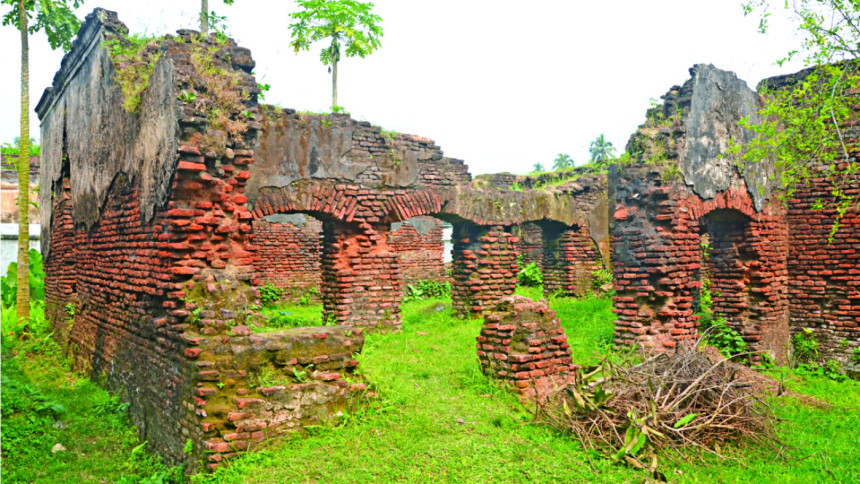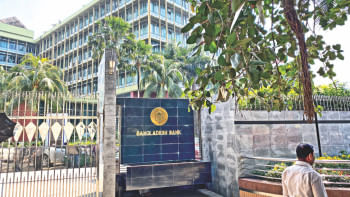The Royal Palace of Puthia

Phohos: Anwar Ali
The palace of Puthia is one of the most renowned archaeological sites of Bangladesh. The palace, for its magnificent ancient Greek style architecture and beautifully landscaped courtyards and gardens, attracts a lot of tourists and history enthusiasts from all parts of the country.
Puthia, now a small town in Rajshahi district, was home of one of the ancient dynasties who once upon a time ruled the entire Rajshahi district from their magnificent palace at Puthia. This dynasty was formed during the reign of Mughal Emperor Akbar when its founder Pitambar was appointed by the emperor to rule the entire Rajshahi area as a local governor. His son Nilambar got the honorific title of Rajah from Mughal Emperor Jahangir for his policy of public welfare and obedience to the Mughal Empire.
In 16 th century Nilambar erected a brick built palace on stone-carved foundation as his family residence cum official court. This ancient palace collapsed during the great Assam earthquake of 1891. Then, in 1895, queen Hemantakumari built another palace on the same foundation which is still standing in a dilapidated condition as a memento of the lost glories of Puthia's kings and queens.
The then rulers of Rajshahi chose this place for their administrative district as it was a bit far from the eroding Padma River which also ensured safety from the marauding Portuguese pirates. The palace is surrounded by deep, spacious moat. The moat filled with freshwater ensured constant water supply to the surrounding villages and the palace. The palace is connected to the village through narrow walkways which could easily be blocked in case of danger.
The main structure of the palace is a colossal two storied building with magnificent Corinthian columns and hanging balconies. In places, the exterior wall of the palace is exquisitely decorated with floral patterns, statuettes and coloured tiles. The entrance of the palace is marked by a huge gateway and two garages for the carriages of the royal families. The ground floor of the palace was used to house the servant's quarters, a barrack, a prison and the treasury office of the estate. There is a well in the ground floor where death row prisoners were thrown away and killed.

A wooden staircase takes the visitors to a huge hall-room which was used as the king's court. The large room with huge window overlooking beautiful gardens was once upon a time decorated with beautiful glazed tiles and chandeliers. The heavy, empty hanger of the chandeliers and a few damaged glazed tiles still testify about its lavish past. Beside the court room there are several rooms which were used as the living quarters of the members of the royal family. Every room of the living quarters have an attached hanging balcony. Most of the decorations and ornamented tiles have been wiped out due to lack of preservations. There were three beautiful renaissance style sculptures on the roof of the palace which were destroyed by the Pakistan army during the liberation war of 1971.
Till 2010 the palace had been used as a government college. However, the building became so decrepit that the college was shifted and now the palace lies abandoned under the custody of the archaeological department. During the recent earthquakes, several months earlier, many dangerous cracks developed in the ceiling and walls of the palace. If immediate step is not taken to preserve this historic site, the nation will lose a remarkable piece of heritage for good.


 For all latest news, follow The Daily Star's Google News channel.
For all latest news, follow The Daily Star's Google News channel. 



Comments